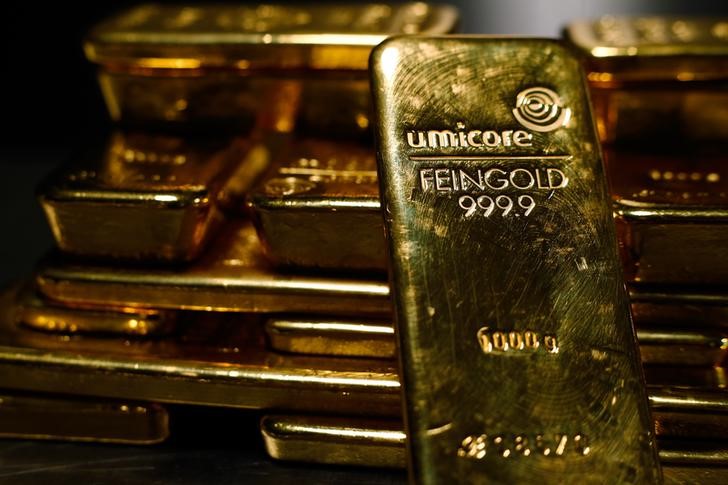© Reuters.
Investing.com– Gold prices fell below key levels on Tuesday as easing concerns over the Israel-Hamas war sapped safe haven demand, while anticipation of a Federal Reserve meeting kept traders biased towards the dollar.
While the Israel-Hamas war still showed no signs of de-escalation, traders began pricing in a lower risk premium from the conflict, given that no other Arab powers appeared to have joined in so far. This saw gold relinquish some gains made earlier in October, during the onset of the war.
Strength in the , before the Fed meeting, also weighed on the yellow metal, as traders pivoted into the greenback to position for any hawkish surprises from the meeting.
fell 0.2% to $1,992.88 an ounce, while expiring in December sank 0.2% to $2,002 an ounce by 01:00 ET (05:00 GMT).
Fed meeting squarely in focus, gold set for strong October
The yellow metal traded lower this week as market focus turned largely towards a this Wednesday.
While the central bank is expected to keep its benchmark rate unchanged, it is also expected to reiterate its higher-for-longer stance on rates, given recent signs of sticky U.S. inflation and resilience in the economy.
Such a scenario is expected to limit any major upside for gold, given that higher rates push up the opportunity cost of buying bullion. This trend weighed heavily on gold over the past year, and kept any trysts with the $2,000 an ounce level largely limited.
Still, safe haven demand on the back of the Israel-Hamas war saw gold prices trading up between 6% and 8% for October- their best monthly gain since March. The yellow metal was also up nearly 10% so far in 2023.
Copper prices sink as China PMIs disappoint
Among industrial metals, copper prices fell on Tuesday after disappointing economic data from top importer China.
fell 0.5% to $3.6377 a pound.
Purchasing managers index data showed that Chinese unexpectedly shrank in October, while the grew at a slower-than-expected pace.
The readings highlighted that stimulus efforts from Beijing only provided limited support to the Chinese economy, and that other factors- particularly a real estate crisis and weak trade- were also dampening growth.
This raised questions over just how strong copper demand will remain in the coming months.
Read the full article here

